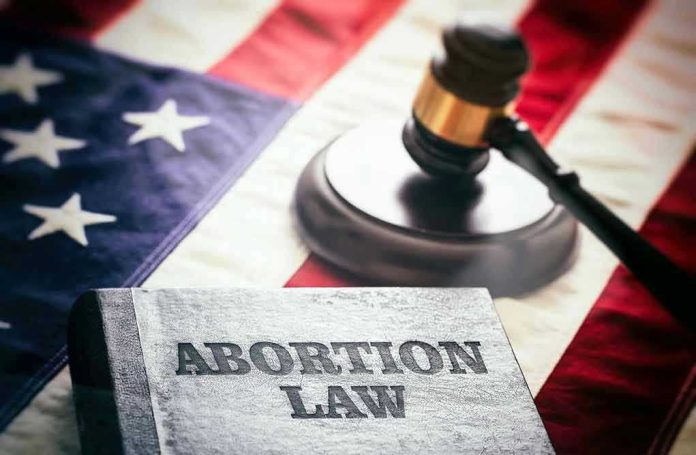
Oklahoma’s latest executive order cutting all state funding for abortion-affiliated providers is triggering sweeping changes in health care access and Medicaid policy, with ripple effects expected across the nation’s ongoing battle over life and taxpayer dollars.
Story Snapshot
- Governor Kevin Stitt signed Executive Order 2025-16, ending state funding for any entity “affiliated with” abortion services.
- The order leverages a recent Supreme Court decision affirming states’ rights to restrict Medicaid funds from abortion-affiliated providers.
- Oklahoma Health Care Authority is revising standards and launching compliance enforcement across all Medicaid providers.
- Advocacy groups are preparing legal challenges amid concerns about reduced health care access, especially in rural communities.
Governor Stitt’s Executive Order Spurs Dramatic Policy Shift
On July 31, 2025, Governor Kevin Stitt signed Executive Order 2025-16, directing every Oklahoma state agency to immediately halt public funding—including Medicaid and grants—to any individual or organization even “affiliated with” abortion services. This order, believed to be the broadest of its kind nationally, instructs the Oklahoma Health Care Authority (OHCA) to begin rulemaking, require new provider attestations, and terminate contracts with entities linked to abortion activities. Implementation deadlines are set aggressively, with full compliance demanded within 120 days and a final report due soon after. Stitt framed the move as a defense of Oklahoma values and taxpayer integrity, declaring, “We won’t allow tax dollars to indirectly subsidize and flow into the abortion industry under the guise of women’s health. My order makes sure every public dollar aligns with our values and supports providers who respect life at every stage.”
The executive order comes on the heels of the Supreme Court’s July 2025 decision in Medina v. Planned Parenthood South Atlantic. That ruling clarified that states have the authority to exclude abortion-affiliated providers from Medicaid participation, giving Stitt and other conservative leaders a green light to push for broader enforcement. Oklahoma, a state already known for some of the strictest abortion laws in the country, is leveraging this legal precedent to extend restrictions beyond direct abortion providers. The order requires all Medicaid (SoonerCare) providers to submit written attestations confirming they have no ties to abortion-related activities. Providers failing to comply face exclusion from the state’s Medicaid program and the loss of public funding.
Decisive Implementation and Stakeholder Response
OHCA is now in a 60-day window to begin revising provider standards and contract terms. Notices have already gone out to Medicaid providers, warning of the new attestation requirements. State agencies are reviewing all current grants and contracts to identify and terminate relationships with any entities that could be considered abortion-affiliated. Advocacy groups on both sides are mobilizing. Pro-life organizations praise the order as a long-overdue reinforcement of states’ rights and family values, calling Oklahoma a model for others to follow. Pro-choice and medical associations, however, warn that the sweeping definition of “affiliation” could exclude providers who do not perform abortions but share resources, refer patients, or simply operate in the same health networks. They argue this could force the closure of clinics that deliver a wide range of essential health services.
Legal experts are closely watching for challenges, especially over the order’s reach. While the Supreme Court’s Medina decision gives states significant leeway, some scholars caution that excluding too many providers could violate federal requirements for Medicaid access, putting Oklahoma’s federal funding at risk. The state’s aggressive timeline and lack of clarity around “affiliation” raise questions about compliance and due process for affected providers. Rural and underserved communities may be particularly vulnerable, as they often rely on multi-service clinics for basic health care. If providers with only tangential abortion ties are forced out, patients could see a reduction in available care, particularly for reproductive and maternal health.
Broader Impact and National Implications
Short-term impacts are already apparent, with Medicaid providers scrambling to review affiliations and prepare compliance paperwork. Some clinics may lose funding or be forced to close, reducing access for Medicaid recipients, especially women seeking reproductive health care. The administrative burden is significant, as providers must now navigate new attestations and potential audits. Long term, Oklahoma’s policy may lead to fewer Medicaid providers and a chilling effect on organizations even indirectly linked to abortion services. The move sets a precedent that other conservative-led states may follow, emboldened by both the Medina decision and Stitt’s assertive approach. Economically, there is a risk that if the policy is successfully challenged in court, Oklahoma could lose access to federal Medicaid dollars, further straining the state’s health care system.
Socially and politically, the order further polarizes the abortion debate and cements Oklahoma’s position as a leader in pro-life policy. Pro-life advocates view the executive action as an overdue correction after years of taxpayer dollars flowing—directly or indirectly—to the abortion industry. From a conservative perspective, the move aligns with core American values: defending life, protecting families, and ensuring responsible stewardship of public funds. Critics, however, argue that the order exemplifies government overreach and could have unintended consequences for vulnerable populations. The next several months will reveal how providers, patients, and the courts respond, and whether other states follow Oklahoma’s lead in redefining the limits of public health funding and abortion policy.
Sources:
Oklahoma Governor’s Office (Executive Order PDF)






